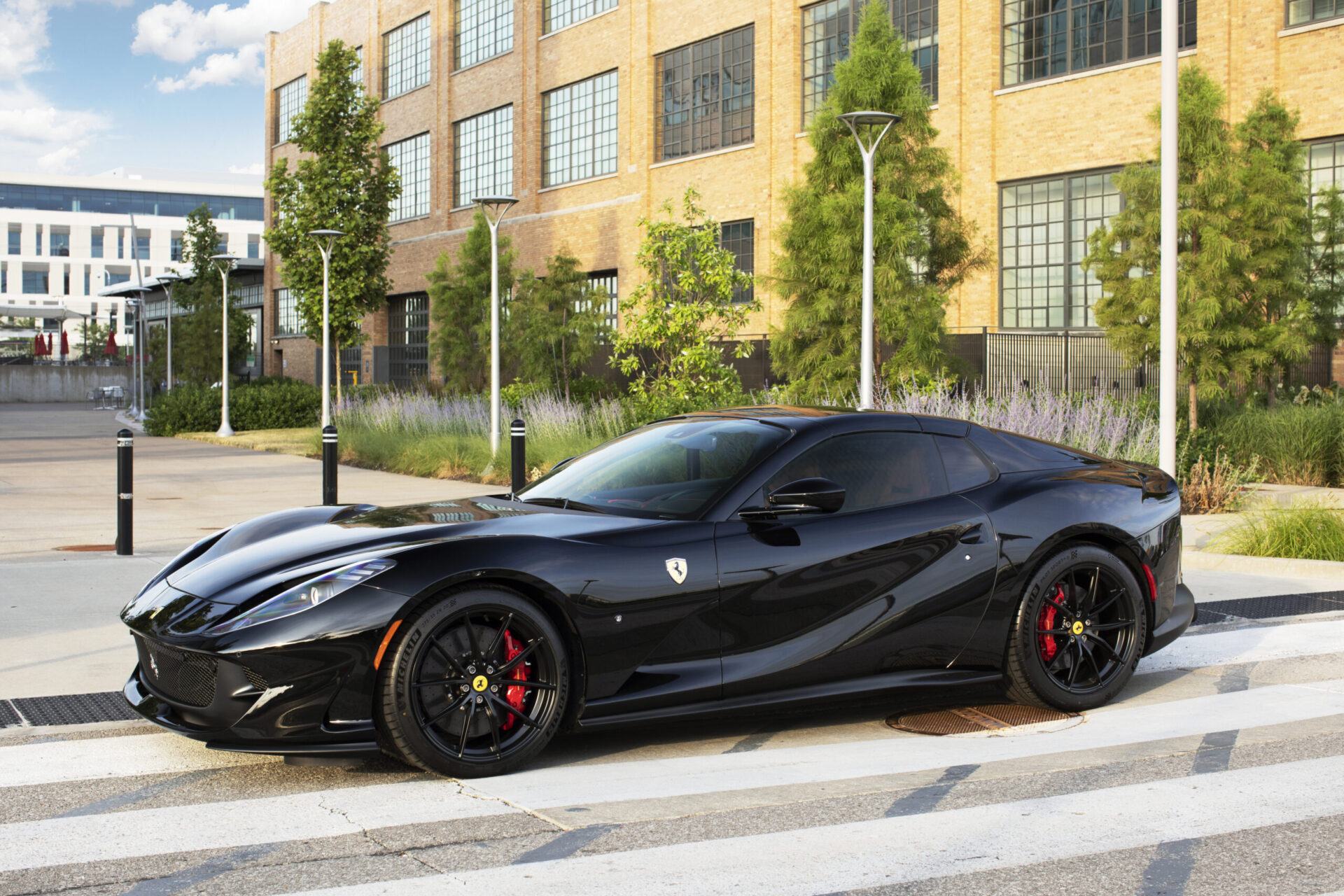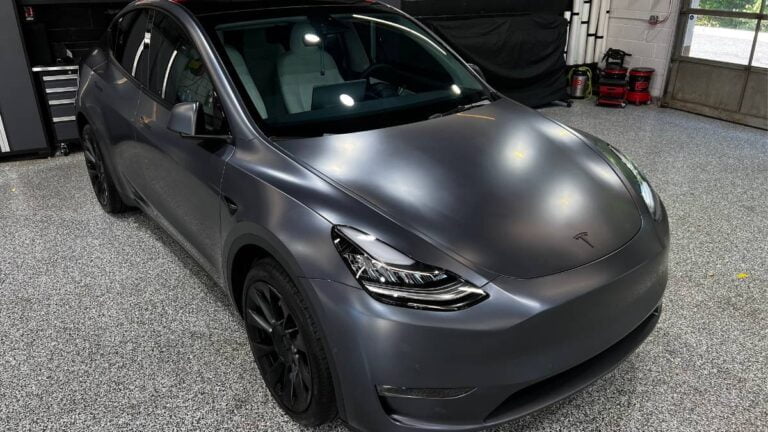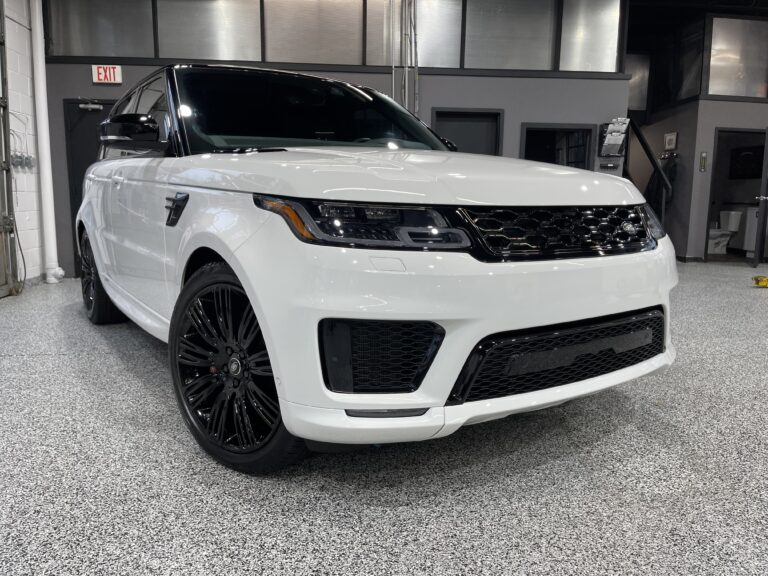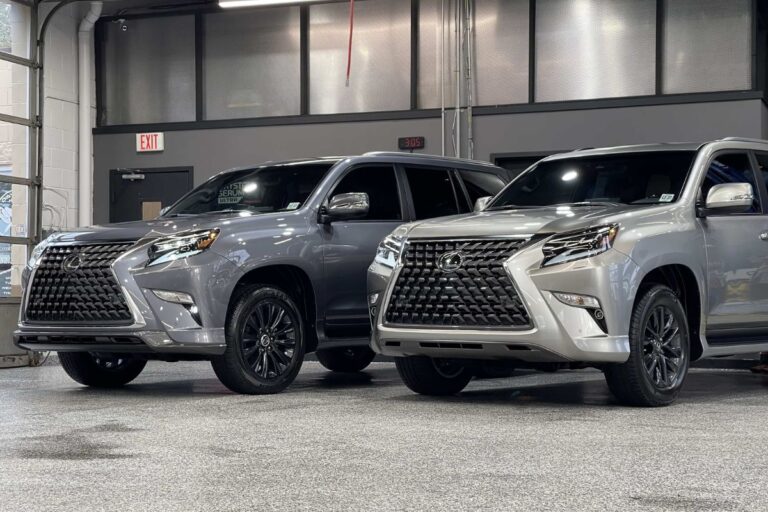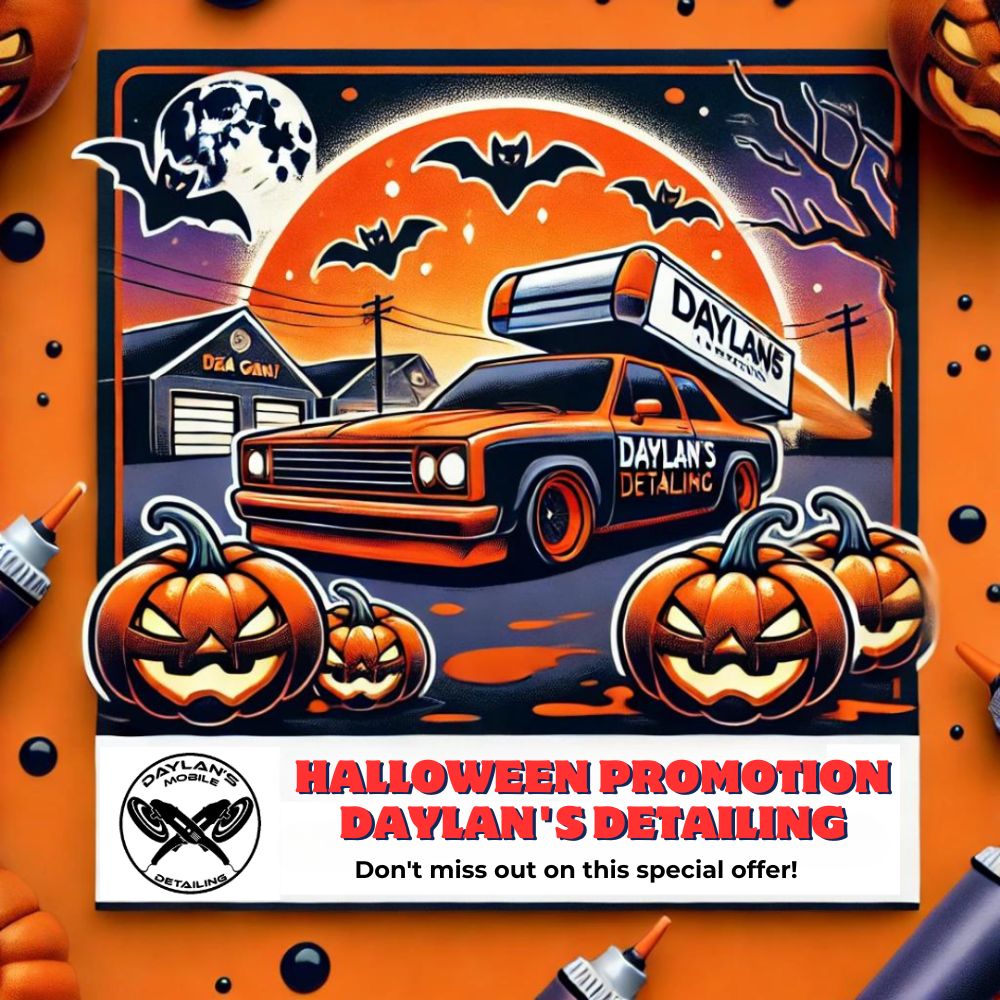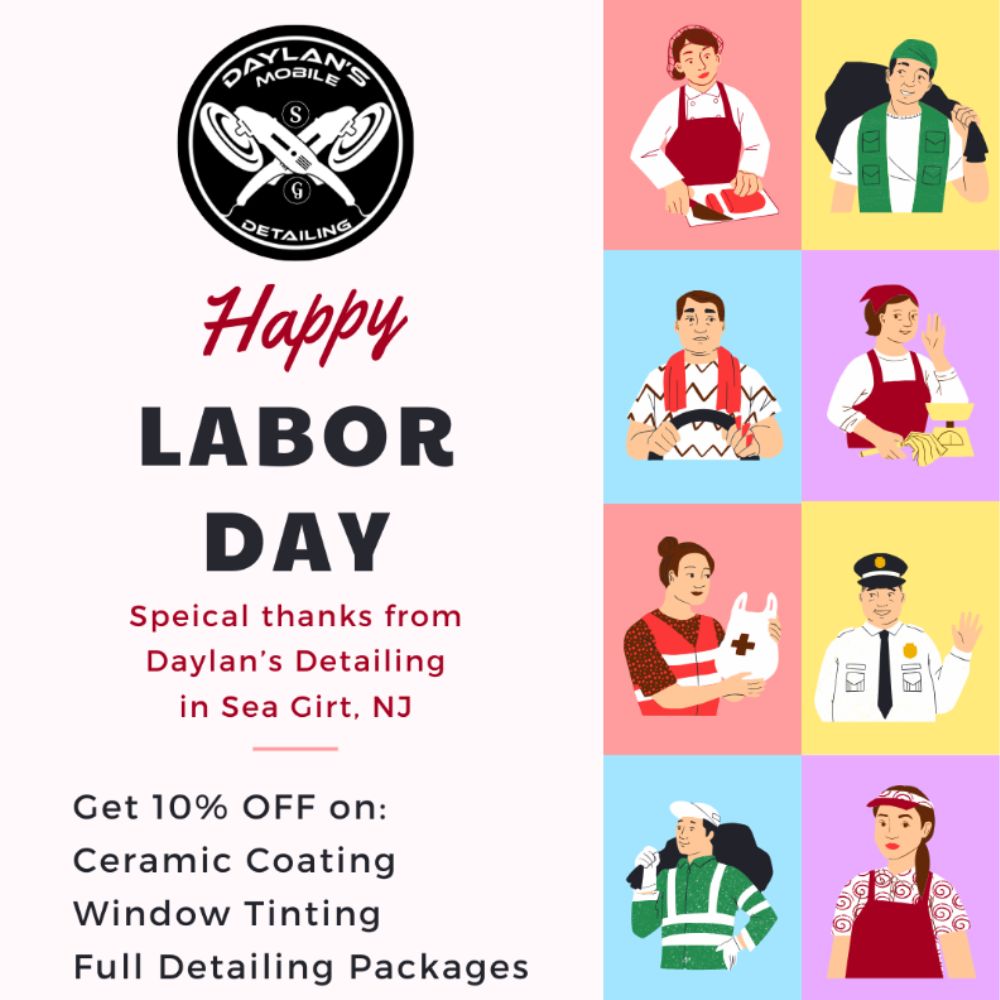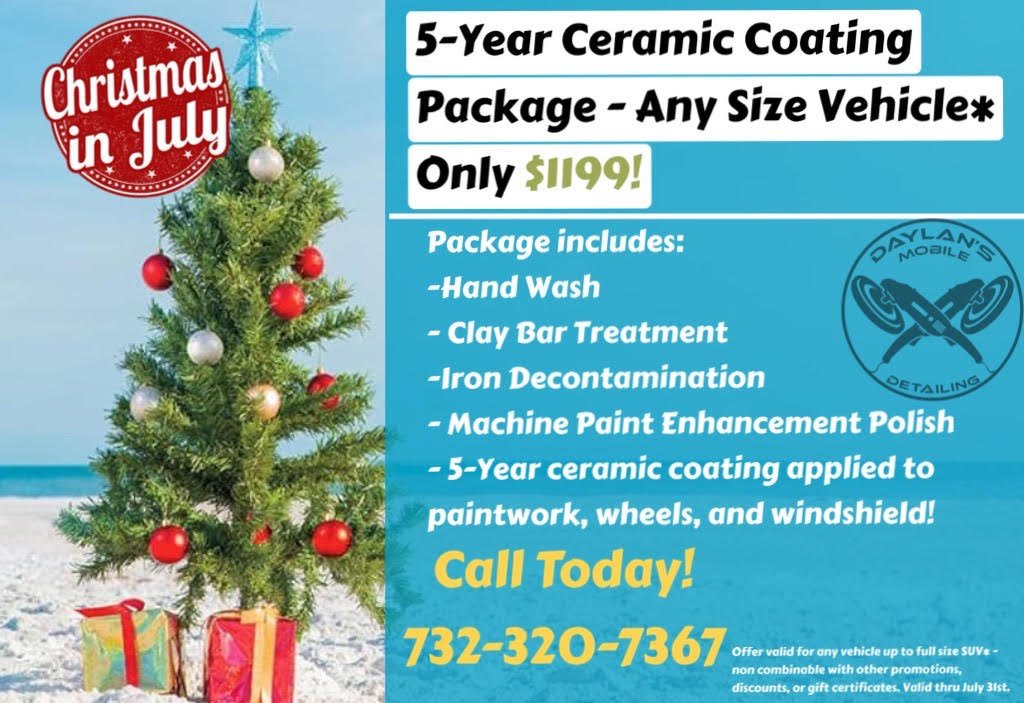Ceramic Coating vs Paint Protection Film, Which One Should You Get?
The car’s paint job, perfect edges, and factory gloss are basically its greatest exterior assets to showcase to the world.
And if you’re one of the car enthusiasts in New Jersey who’s looking to provide an extra layer of protection of these to your new car, you may be wondering whether ceramic coating or paint protection film is the better option. Both have their pros and cons, but which one is right for you?
In this blog post, we’ll break down the identities, similarities, and differences between the two so that you can make an informed decision about which one is best for your needs.
Dwelling first on Ceramic Coating, what is it?
Nano Ceramic Coating is just a liquid polymeric substance that is treated to a car’s exterior structure. It chemically interacts with the car’s manufacturer’s paint after administration, forming a measure of defense and a hydrophobic layer. Its hydrophobic qualities make it more difficult for pollutants to react with the car’s paint job. This has two major advantages for typical car owners:
- It keeps the automobile cleaned for a longer period of time.
- It makes cleaning the car at ease when the time comes for an express car wash.
Such would also aid to limit the possibility of some kinds of injuries, like…
- Preventing acidic pollutants from generating chemical stains.
- Preventing acidic pollutants from generating chemical etch scars.
- Preventing UV rays from causing oxidation (faded paint).
What are the potential downsides or crucial points of such a coating?
Ceramic Coatings are not a “set it and forget it” solution. You will need to maintain the coating with regular washes and care.
If it is not applied correctly, or if it does not bond properly with the vehicle’s paint, it can cause more harm than good.
A ceramic coat can also make it more difficult to engage in paint correction to imperfections, such as swirl marks or scratches.
Now, let’s move on to the latter: Paint Protection film, what is it?
The Paint Protection Film is composed of a clear urethane polymeric compound that may be applied to just about any painted exterior of your vehicle. In a nutshell, automobile PPF protects the integrity of your car’s paint job by lowering the danger of several forms of hazards, like…
- Gravel, road debris, and foreign objects generating chips and scrapes.
- Swirl markings caused by washing
- Acidic pollutants generating chemical stains.
- Acidic pollutants generating chemical etching and scars.
- Mineral and salt deposits causing hard scuff marks.
- UV radiation causing fading or oxidation.
What are the potential drawbacks of PPF?
Paint Protection Film is not invisible. You will be able to see it on your car’s paint, and it may change the color or appearance of the paint.
Clear bras, like the former, are also not “set it and forget it” solutions. You will need to maintain the film with regular washes and care.
If the Paint Protection Film is not applied correctly, or if it does not bond properly with the paint, it can cause more harm than good.
Additionally, it can be difficult to administer removal, and it may damage your car’s surface if it is not removed correctly.
Do these substances have similarities?
As can be inferred, both of these solutions help to keep your automobile appearing younger for an extended period by preserving and protecting the paint.
Aside from this shared fundamental goal, the two devices share some technical specifications. Both products, in particular, aid in the reduction of damage caused by UV radiation and corrosive pollutants.
Finally, whether you acquire Ceramic Coating or Paint Protection Film, you are bound to increase the value of your automobile.
How are these two distinct protective layers different?
Despite their commonalities, they differ significantly and tend to perform a variety of different functions.
For instance, Ceramic Coatings are thicker than PPF. Furthermore, Paint Protection Film possesses chemical properties that permit it to do self-healing, meaning that it restores to its former form after being indented or abraded. Because of these properties, it may absorb rock chipping, minor scrapes, typical swirl marks, and water spotting without being irreversibly scarred.
The former coating lacks this capability. Despite some companies’ outlandish promises, such a coating material does not rule out the possibility of scratches, rock chips, hard water stains, and swirl marks.
Ceramic Coatings, on the other hand, have certain advantages, notably with the hydrophobic material they provide. Some PPFs include a hydrophobic and clear coat, although they rarely function as well as a complete ceramic pro package.
Furthermore, when you install this coating to your car you reap the upside advantages of the hydrophobicity on the painted surface without having the installation of any film to the entire vehicle.
If you want to be enlightened more about how Ceramic Coating and Paint Protection Film in New Jersey resemble and differ, and how they function to protect your whole car, then give Daylan’s Mobile Detailing a call and they can give you and your car what you deserve!
Which is more superior between the two?
Now for the encouraging news. You do not really have to choose one between the two. These can be used on the same car at the same time. The dynamic combo of a car being PPF-applied and ceramic coated is the absolute pinnacle of undetectable car protection available.
This is how it goes.
Paint Protection Film would be first placed in the areas of your car that are most vulnerable to rock fragments or small scratches from road hazards. Because a typical coating does not safeguard your car against this type of damage, PPF should be applied to these areas. The rocker panels, hood, fenders, front bumper, side mirrors, and back wheel arch are frequently included.
After the most susceptible parts have been secured with Clear Bra, your entire vehicle will be coated with a strong Ceramic Coating. The protective layer will create a semi-permanent bond to both the manufacturer’s paint and the previously applied films. This provides an added layer of security for chemical and stain resistance. It will also assist in maintaining the PPF clean and clear of pollutants, thereby extending its life.
The said coating would then prevent corrosion and acid-etched marks or discoloration anywhere else on the car, whether coated by film or not. Furthermore, the hydrophobic nature makes it more difficult for pollutants to bind to the car, making your car look new for long and making washing smoother, as well. The coating’s smooth surface will also help improve the luster of your car’s paint job.
Together, the two treatments will protect your car’s paint down the road while also improving its aesthetic on a daily basis.
Drive with ultimate protection with Daylan’s Mobile Detailing
So, if you want to safeguard and keep the showroom sheen and superior paintwork on your car so that it looks great every time you utilize it, a perfect blend of Ceramic Coating and Paint Protection Film in New Jersey might just be the perfect option for you.
If you’re looking for ceramic coating or paint protection film services around the area, look no further than Daylan’s Mobile Detailing. These auto detailing pros offer top-of-the-line products and services to help you protect your investment. They also offer mobile services which means they will come to you and bring the detailing superiority to your car right away, so you don’t have to go out of your way.
For a free estimate, contact or visit Daylan’s Mobile Detailing today and drive with ultimate protection!



